


An online soybean pest survey has been developed from a Pest Management Strategic Planning meeting held in August 2003. This is survey is intended for producers and others involved with soybean production in Kentucky, Tennessee, southern Illinois, and southern Indiana.
You can access this survey at: http://www.sripmc.org/KY/SoybeanPMSPSurvey/
The purpose of this survey is to demonstrate producer input on critical pest issues relative to soybean production in this region of the county. This information will be used by the United States Department of Agriculture (USDA) and the Environmental Protection Agency (EPA) in making decisions about pesticide registration issues and prioritization for the funding of extension and land-grant/government research projects.
This survey was developed through the Kentucky Pest Management Center (KPMC). The KPMC is a grant-funded program in the UK Entomology Department. We develop Crop Profiles and Pest Management Strategic Plan documents for commodities in Kentucky and the region. These documents were designed as a method for producers and those with first-hand or hands-on knowledge to provide input on what pest management tools are most critical for the production of Kentucky commodities. More information can be found at http://www.uky.edu/Agriculture/KPMC/KPMC.htm.
This is your chance to collectively provide "first-hand"
information to the USDA and EPA on current troublesome
pests and the potential impact of emerging pests. We
encourage those involved with soybean production in this
region (producers, industry, and extension) to take 10 to 20
minutes out of your day to provide your input on these critical
pest management issues.

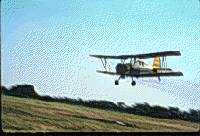


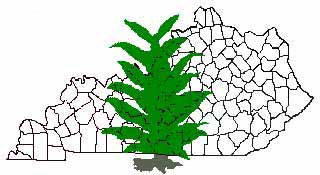
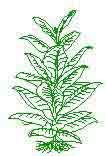 Only one fungicide active ingredient, mefenoxam, is
labeled as of April 12, 2004 for soil applications in tobacco
fields. It is found in the products Ridomil Gold EC and
Ultra Flourish. Although these two fungicides contain the
same active ingredient (a.i.), the amount of it in the
formulation is different. Ridomil Gold EC contains 4 lbs
a.i./gallon while Ultra Flourish has 2 lbs a.i./gallon. The
two products have been equally effective in our side- by-
side tests in Kentucky when used at the same rate of active
ingredient and timing. In addition, generic versions of
metalaxyl were being evaluated a few years ago, but to my
knowledge none of them has been labeled on tobacco in
the USA.
Only one fungicide active ingredient, mefenoxam, is
labeled as of April 12, 2004 for soil applications in tobacco
fields. It is found in the products Ridomil Gold EC and
Ultra Flourish. Although these two fungicides contain the
same active ingredient (a.i.), the amount of it in the
formulation is different. Ridomil Gold EC contains 4 lbs
a.i./gallon while Ultra Flourish has 2 lbs a.i./gallon. The
two products have been equally effective in our side- by-
side tests in Kentucky when used at the same rate of active
ingredient and timing. In addition, generic versions of
metalaxyl were being evaluated a few years ago, but to my
knowledge none of them has been labeled on tobacco in
the USA.
Mefenoxam-containing fungicides can be an important tool for controlling black shank, blue mold, and Pythium in the field, where these pathogens are sensitive to this chemistry. Mefenoxam- resistant strains (some like to call them insensitive strains, but I prefer resistant strains when communicating with users) are present in Kentucky for all these diseases. In fact, with blue mold, resistant stains are widespread and represent the most common strains present in Kentucky since 1995, greatly reducing the benefit of this chemistry in blue mold control. Furthermore, these chemicals should not be considered the primary tool in the control of any disease. Instead, they are important supplementals to other disease control methods. Crop rotation and resistant varieties are especially critical to the control plan with root diseases. Other chemicals are important for blue mold control. Mefenoxam will not control diseases caused by bacteria, Rhizoctonia or Fusarium species.
These fungicides are labeled ONLY for soil-directed application - preplant only, or preplant plus layby, or preplant plus 1st cultivation plus layby. Current labels do not support use of the cultivation or layby treatments unless the preplant application has also been made. Both labels prohibit all uses in greenhouses, transplant production, transplant water, and foliar applications. Using the proper rate, the appropriate application/placement method, and the correct timing are important to achieving successful control with mefenoxam chemistry. These materials are very water-soluble and leach rapidly from soils, so they must be place carefully and supplemented to achieve long term control. They are also degraded fast by microbes in the soil, especially in fields with a long history of their use. The same conditions that promote leaching also favor Pythium and black shank! Mefenoxam performs best when used prior to infection (in a preventive role) rather than waiting until the disease is damaging the crop, but this chemistry also has some rescue potential. The pre-plant applications should be made in at least 20 gallons of water per acre and incorporated 2-4 inches deep. Our data have long supported the benefits of including a series of pre- and post-plant applications, especially under moderate to strong black shank pressure. Drop nozzles are needed for best results from post-plant applications. Position these nozzles so the spray is deposited mainly on the soil and under the plants, insuring the soil at the base of the plant stem is included, and that the treated area is covered by cultivated soil. This is so important that several growers have resorted to hand-held sprayers and walking-on the application, to insure the coverage. Remember that the active ingredient has strong, upward systemic activity in the plant, so it is moving away from where it is needed for root disease control. Thus, foliar deposits play little or no role in black shank and Pythium control; furthermore, chemical deposited on leaves may be phytotoxic at these rates. The label does not support applications later than layby (final cultivation) to avoid residues issues in cured leaf.
Some of our studies have shown that "float-plants" are more susceptible to black shank than are plants produced in traditional plant beds. There are probably multiple reasons for this, but in part, it may be due to the " transplant medium" remaining with the plant all season and providing a highly conducive environment for Phytophthora and Pythium to persist and develop near the critical tissues at the base of the stem. Consequently, sequential applications of mefenoxam fungicides (preplant, cultivation, and layby) and more careful direction of the cultivation and layby treatments have become increasingly important with use of the float plant. Also, many growers are incorporating the chemical too deeply, especially when it has been impregnated on fertilizers. Be especially careful with incorporation of the preplant applications if you are using small, shallow- planted transplants. It is important to set the transplant into the zone that has the chemical to achieve control of black shank and Pythium.
The following table should be of assistance in helping growers plan their scheduling of sequential applications of Ridomil Gold EC and Ultra Flourish for black shank control. Our studies have demonstrated that sequential applications provide the best control under strong disease pressure ( preplant + layby or preplant + 1st cultivation + layby). Preplant alone is adequate only under low levels of black shank. In some seasons, especially when dry weather persists before and during the transplant establishment phase followed by wet weather later, less benefit is obtained from preplant applications than from the post- transplanting applications. Therefore, downward adjustments in the initial rate of chemical may be sound in some seasons so long as sequential applications are being made.
| Timing and rate of formulated product/acre ** | ||||
|---|---|---|---|---|
| Option* | Fungicide | Preplant | 1st Cultivation | Lay-by |
| Preplant only | Ridomil Gold EC | 2-3 pts | 0 | 0 |
| Preplant only | Ultra Flourish | 2-3 Qts | 0 | 0 |
| Preplant + layby | Ridomil Gold EC | 2 pts | 0 | 1 pt |
| Preplant + layby | Ultra Flourish | 2 Qts | 0 | 1 Qt |
| Preplant + 1st cultivation + layby | Ridomil Gold EC | 1 pt | 1 pt | 1 pt |
| Preplant + 1st cultivation + layby | Ultra Flourish | 1 Qt | 1 Qt | 1 Qt |
* If only Pythium and blue mold control are desired the rates can be
cut in half. These materials are effective only against mefenoxam-
sensitive strains.
** Multiple applications are especially beneficial with float plants and
under strong disease pressure, especially in seasons with multiple or
prolonged weather stresses. The rates listed are the maximum for the
product.
For the latest blue mold status and other tobacco disease information, check the KY Blue Mold Warning System online.
![]() http://www.uky.edu/Agriculture/kpn/kyblue/kyblue.htm
http://www.uky.edu/Agriculture/kpn/kyblue/kyblue.htm

For more information about tobacco pests, visit "Insect Management Recommendations".
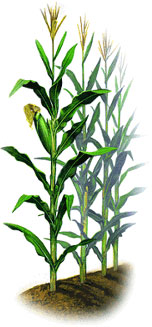
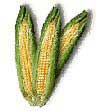 Growers using any type of Bt corn (for corn borers,
cutworms, or rootworms) will need to plant non-Bt refuges
along with the Bt corn. The refuges will ensure that the
insect pests do not become resistant to Bt corn. The
minimum refuge size is 20% of the corn acreage on the
farm, although larger amounts can be used. With the
YieldGard (corn borer) and Herculex Bt corn, the refuge
needs to be within a 1/2 mile of the Bt fields, but it is
shortened to within 14/ mile if the non-Bt field will be
sprayed with an insecticide that will control corn borers.
Growers using any type of Bt corn (for corn borers,
cutworms, or rootworms) will need to plant non-Bt refuges
along with the Bt corn. The refuges will ensure that the
insect pests do not become resistant to Bt corn. The
minimum refuge size is 20% of the corn acreage on the
farm, although larger amounts can be used. With the
YieldGard (corn borer) and Herculex Bt corn, the refuge
needs to be within a 1/2 mile of the Bt fields, but it is
shortened to within 14/ mile if the non-Bt field will be
sprayed with an insecticide that will control corn borers.
The refuge with the YieldGard Rootworm needs to be much closer than with the YieldGard or Herculex refuge. The reason is that the female rootworm beetles move only a short distance before mating. European and southwestern corn borer moths move much farther before mating. For this reason and to ensure if a resistant beetle were to emerge from the YieldGard Rootworm field that it would likely mate with a susceptible beetle, the refuge for YieldGard Rootworm corn needs to be immediately adjacent to the Bt field. The refuge for the YieldGard Rootworm corn must also have the same rotational history as the refuge field. Various planting configurations can be used including adjacent blocks of corn (splitting fields) or end rows around the field, as long as the non-Bt acreage is equal to at least 25 percent of the Bt corn.
For information about corn pests, visit
"Insect Management Recommendations".

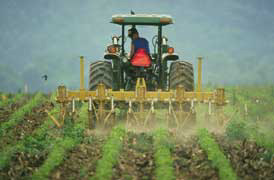
![]() Fall is the best time to collect soil samples for soybean cyst
nematode (SCN) analysis, primarily for logistical reasons.
In the fall, time constraints are often reduced and soil
conditions tend to facilitate collecting and mixing of soil
samples. Logistics aside, soil sampling for SCN analysis in
the spring is perfectly acceptable. The only real limiting
factor is one's ability to collect a representative soil sample,
which requires mixing of soil. If a bulk soil sample cannot
be adequately mixed, and a sub-sample taken, than it is
unlikely that the sample you send us will be representative
of the field. SCN numbers generated from non-
representative soil samples may be very misleading.
Fall is the best time to collect soil samples for soybean cyst
nematode (SCN) analysis, primarily for logistical reasons.
In the fall, time constraints are often reduced and soil
conditions tend to facilitate collecting and mixing of soil
samples. Logistics aside, soil sampling for SCN analysis in
the spring is perfectly acceptable. The only real limiting
factor is one's ability to collect a representative soil sample,
which requires mixing of soil. If a bulk soil sample cannot
be adequately mixed, and a sub-sample taken, than it is
unlikely that the sample you send us will be representative
of the field. SCN numbers generated from non-
representative soil samples may be very misleading.
Why test soil for SCN presence and levels? Most frequently, producers simply want to know if they need to plant a SCN-resistant variety. A more specific goal is to determine if it is safe to plant a SCN-susceptible variety. There are not many SCN-susceptible varieties left on the marketplace, but there are some. If you have a desire to plant one of these, a SCN soil analysis will give you an idea of the yield consequences if you were to plant such a variety. Typically, these samples are taken AFTER corn in a corn - soybean rotation.
Another reason for SCN soil testing is to get a better handle on how a SCN resistant variety has performed when grown in a specific field. Certainly, crop yield is the most common means of assessing variety performance. However, there is also a tremendous difference in how various SCN-resistant varieties impact specific SCN populations. Some varieties will result in net population increases; some will result in population decreases; and some will result in no or very little population change. All three responses can occur in one field, depending on the resistant variety grown. If you have an interest in knowing how specific SCN-resistant varieties are impacting SCN populations on your farm (which may be related to the yields being achieved), arrange to have a SCN soil analysis done for each field in question. These samples would be taken in fall or spring immediately after the resistant variety is harvested (not following corn). In a perfect world, you would also have pre-plant SCN population data from the same year. This would give you baseline information to know if populations went up, down, or stayed the same. However, there is also value in simply knowing if high SCN populations are being maintained in a field, despite the fact that you are growing SCN-resistant varieties. A finding that a field population of SCN is high after growing a resistant variety would indicate that something may be wrong and that you may need to put additional thought and time into making future variety selection decisions.
SCN soil analyses cost $8.50 per sample. Instructions for collecting and submitting soil samples can be obtained at all county Extension offices. All commercial samples must go through the county Extension office.
For more information about soybean pests, visit
"Insect Management Recommendations".

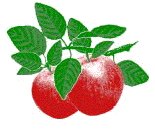
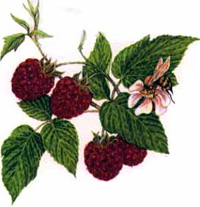 Several samples of raspberry crown borer have turned up
in the crowns of blackberries at the UK South Farm. These
are the larvae of a clearwing moth, similar to lesser
peachtree borer, peachtree borer, grape root borer, and
squash vine borer. In raspberries, this pest can cause
reddening of leaves, cane wilting, and even cane death. In
blackberries the symptoms can be this severe, they it can
also be much more subtle, only reducing growth,
weakening vines, and lowering yields. Piles of frass
around the crown of the plant are symptomatic of infested
canes. Canes may appear swollen around the sites of
tunneling. The problem at South Farm was spotted as the
some of the blackberry canes were pruned in the spring, a
number of the canes were tunneled at their bases.
Several samples of raspberry crown borer have turned up
in the crowns of blackberries at the UK South Farm. These
are the larvae of a clearwing moth, similar to lesser
peachtree borer, peachtree borer, grape root borer, and
squash vine borer. In raspberries, this pest can cause
reddening of leaves, cane wilting, and even cane death. In
blackberries the symptoms can be this severe, they it can
also be much more subtle, only reducing growth,
weakening vines, and lowering yields. Piles of frass
around the crown of the plant are symptomatic of infested
canes. Canes may appear swollen around the sites of
tunneling. The problem at South Farm was spotted as the
some of the blackberry canes were pruned in the spring, a
number of the canes were tunneled at their bases.
The insect takes two years to complete its life cycle. In mid summer, eggs are laid individually on lower leaves. The eggs hatch in the fall and the small larvae overwinter just beneath the soil line on the crown of the plant. The following spring they tunnel into the crown and bases of the canes. They pass the second winter in the crown before emerging the following summer.
Control of raspberry crown borer begins with removal of
wild brambles in the vicinity of the cultivated raspberries
and blackberries. Infested plants that are seriously
weakened need to be removed and destroyed. In terms of
chemical control, azinphosmethyl (Guthion Solupak and
Sniper 2E) can be used as a drench around the base of the
plants in the early spring. Sprays can also be applied to the
lower canes after harvest to reduce egg laying and
emergence of the young larvae.

 Stone fruits. Peaches are past bloom in most Kentucky
orchards. It is too late to apply sprays for control of peach
leaf curl disease. Fungicides applied at petal fall are
intended to prevent the blossom blight phase of brown rot
disease. The next sprays will be applied at shuck-split and
are directed towards management of brown rot, scab,
powdery mildew, and if needed, bacterial spot. Last year,
wet spring weather favored scab disease and prevented
adequate fungicide application to manage it. Growers
should be concentrating now on fungicide applications
that will help prevent peach scab disease. See the
commercial tree fruit spray guide for suggestions of
fungicides specifically effective against peach scab.
Stone fruits. Peaches are past bloom in most Kentucky
orchards. It is too late to apply sprays for control of peach
leaf curl disease. Fungicides applied at petal fall are
intended to prevent the blossom blight phase of brown rot
disease. The next sprays will be applied at shuck-split and
are directed towards management of brown rot, scab,
powdery mildew, and if needed, bacterial spot. Last year,
wet spring weather favored scab disease and prevented
adequate fungicide application to manage it. Growers
should be concentrating now on fungicide applications
that will help prevent peach scab disease. See the
commercial tree fruit spray guide for suggestions of
fungicides specifically effective against peach scab.
Pome fruits. Most apples are at or near full bloom. Many growers this spring have already contended with long, cool rainy periods with extended apple scab infection periods during the green tip and tight cluster stages. This week, prolonged wetness with cool temperatures will again make scab infections possible. It is hoped that the dry and warmer weather that occurred the past week gave apple growers adequate time to protect their crop so that new scab infections during the current rainy disease- favorable weather would not occur. For scab management, there are many effective fungicides and fungicide combinations for growers to choose from.
Although fire blight bacterial activity occurred in cankers late last week, further development of fire blight would be stopped with current cool (average less than 50 F) temperatures. Should temperatures warm significantly for several days during bloom, growers will need to be prepared to apply streptomycin to prevent fire blight. Warm weather with occasional light showers will favor primary infections of fire blight
Disease management advice. Commercial growers should be consulting U.K. Cooperative Extension Publication ID- 92, Kentucky Commercial Tree Fruit Spray Guide 2004, available at County Extension Offices statewide. Backyard growers should use ID-21, Disease and Insect Control Programs for Home Grown Fruit in Kentucky Including Organic Alternatives.
For more information about crop and livestock pests, visit
"Insect Management Recommendations".

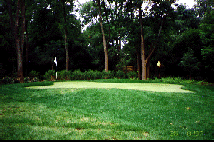
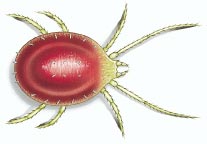 Clover mites are accidental invaders that can be a nuisance
during early spring if large numbers crawl indoors at
doorways or windowsills. These small red-brown
creatures are harmless but leave a red stain when crushed.
Clover mites are accidental invaders that can be a nuisance
during early spring if large numbers crawl indoors at
doorways or windowsills. These small red-brown
creatures are harmless but leave a red stain when crushed.
Usually, they are a short-lived phenomenon and intruders
can be wiped up with a soapy rag or sprayed outdoors
with insecticidal soap. More information is available in
Entfact 627.
http:\\www.uky.edu/Agriculture/Entomology/entfacts/struct/ef627.htm


In an attitudinal survey of 674 Kentucky households, 93 percent expressed concern over finding termites in their homes. The entomology department receives many calls from people wanting to know what can be done to protect their largest investment or if a certain practice or condition is likely to cause termite problems. Homeowners can reduce the risk of termite attack by following these suggestions.
1. Eliminate wood contact with the ground. Many termite infestations result from structural wood being in direct contact with the soil. Earth-to-wood contact provides termites with easy access to food, moisture, and shelter, as well as direct, hidden entry into the building. Wood siding, porch steps, door and window frames and similar wood items should be at least six inches above ground level. Eliminating wood-to-ground contact may require re-grading or pulling soil or mulch back from the foundation, cutting the bottom off of siding, or supporting steps or posts on a concrete base. Contrary to popular belief, wood that has been pressure treated is not immune to termite attack. Termites will enter pressure-treated wood through cut ends and cracks, and will also build tunnels over the surface.
2. Don't let moisture accumulate near the foundation. Termites are attracted to moisture and are more likely to "zero in" on a structure if the soil next to the foundation is consistently moist. Water should be diverted away from the foundation with properly functioning gutters, down spouts and splash blocks. Leaking faucets, water pipes and air conditioning units should be repaired, and the ground next to the foundation should be graded (sloped) so that surface water drains away from the building. Homes with poor drainage may need to have tiles or drains installed. Lawn sprinklers and irrigation systems should be adjusted to minimize puddling near the foundation.
3. Reduce humidity in crawl spaces. Most building codes call for 1 square foot of vent opening per 150 square feet of crawlspace area. For crawlspaces equipped with a polyethylene vapor barrier (see below), the total vent area often can be reduced to 1 square foot per 300 to 500 square feet of crawl space area. One vent should be within 3 feet of each exterior corner of the building. Vents should be kept free of leaves, dirt and debris, and should not be obstructed by vegetation. Moisture and humidity in crawl spaces can be further reduced by installing 4-6 ml polyethylene sheeting over about 75 percent of the soil surface. The soil cover will act as a vapor barrier to reduce evaporation from the soil and condensation of moisture on joists and subflooring. Vents and vapor barriers are installed by most pest control companies.
4. Never store wood or paper against the foundation or inside the crawl space. Firewood, lumber, cardboard boxes, newspapers, and other cellulose materials attract termites and provide a convenient source of food. When stacked against the foundation they offer a hidden path of entry into the structure and allow termites to bypass any termiticide soil barrier that is present. Vines, ivy, and other dense plant material touching the house should also be avoided. Where practical, dead stumps and tree roots around and beneath the building should be removed, along with old form boards and grade stakes left in place after the building was constructed.
5. Use mulch sparingly, especially if you already have termites or other conducive conditions. Many people use landscape mulch for its aesthetic and plant health benefits. Excessive or improper usage, however, can contribute to termite problems. Termites are attracted to mulch primarily because of its moisture-retaining properties, and the insulation it affords against temperature extremes. The mulch itself is of poor nutritional value to termites and a non-preferred source of food. Since the moisture retaining properties of mulch are more of an attractant than the wood itself, it males little difference what type of mulch is used (cypress, pine bark, eucalyptus, etc.). Contrary to popular belief, crushed stone or pea gravel are comparable to wood mulch in terms of attraction, since they also retain moisture in the underlying soil. Where mulch is used, it should be applied sparingly (2-3 inches is usually adequate), and should never be allowed to contact wood siding or framing of doors or windows.
6. Consider treatment by a professional pest control firm. Buildings have many natural openings through which termites can enter, most of which are hidden. While the above measures will help make a house less attractive to termites, the best way to prevent infestation is to treat the adjoining soil with a termiticide. There are two general categories of termite treatment, liquids and baits. The purpose of a liquid treatment is to make the ground around the foundation repellent and/or toxic to termites so that they will not infest the structure. While most of the liquid termiticide products are repellent, three newer materials, Premise (imidacloprid), Termidor (fipronil), and Phantom (chlorfenapyr) are non-repellent to termites foraging in the soil. Consequently, termites tunneling into the treated zone are killed. In Kentucky, these products are proving very reliable in their ability to control termites in the initial attempt. Baits can also be installed to eliminate termites foraging in the vicinity of a structure (see newly revised Entfacts 604: Termite Control: Answers for Homeowners, and 639: Termite Baits: A Guide for Homeowners).
Preventively treating a home for termites is a reasonable investment, especially if the structure has no prior history of treatment. If the building was previously treated by a pest control firm, it's a good idea to maintain the warranty by paying the annual renewal fee. Should termites re-infest the building, (which can happen even if the initial treatment was performed correctly), the company will return and retreat the affected area at no additional charge.
Whether or not a person chooses to have their home treated, they should know the signs of termite infestation:
Detecting hidden infestations requires a trained eye. Most
pest control firms perform termite inspections free of
charge and will alert the homeowner to any conditions
they uncover that are conducive to termite attack.

![]() Two spotted spider mites are not the only acarines that can
cause headaches for greenhouse growers. Tiny cyclamen
mites and broad mites can be significant pests, as
evidenced by samples received at the Plant Disease
Diagnostic Lab last week. The small size of the latter two
species means the first indication of an infestation often is
severe plant injury or distortion. By then, the infestation
may be so severe that bringing it under control can be a
serious challenge.
Two spotted spider mites are not the only acarines that can
cause headaches for greenhouse growers. Tiny cyclamen
mites and broad mites can be significant pests, as
evidenced by samples received at the Plant Disease
Diagnostic Lab last week. The small size of the latter two
species means the first indication of an infestation often is
severe plant injury or distortion. By then, the infestation
may be so severe that bringing it under control can be a
serious challenge.
Cyclamen and broad mites, translucent to light brown and less than 1/100 inch long, feed on a wide range of ornamental plants. Their feeding can produce a variety of effects including brittle, twisted, puckered or otherwise deformed leaves and shriveled buds and flowers. Cyclamen mites tend to feed in developing buds while broad mites live on the underside of leaves. Regular and careful plant examination of any distorted or abnormal leaves is the key to detecting infestations. That takes some effort because these mites move to shaded spots in plant crowns under surfaces of leaves to avoid light. Their small size also means that a strong hand lens is needed to see them.
It is usually best to discard a few infested plants as soon as they are detected rather than to try to eliminate established infestations. It is easy to spread mites around on your hands as you work with plants.
Many mite control products work by contact so very thorough spray coverage is essential for best effect. Often, eggs and some specific stages of the mite life cycle are not susceptible to acaricides / insecticides so repeated applications are necessary. In addition, it may be important to rotate classes of acaricides to reduce the potential problems with resistance. Control alternatives are available in Entfact 450 - Some insecticides / acaricides labeled for use in greenhouses and interior plantscapes. http:\\www.uky.edu/Agriculture/Entomology/entfacts/trees/ef450.htm
Natural enemies of important mite species are commercially available and may be used to manage pests in enclosed situations like greenhouses.

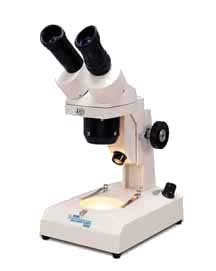
Recent diagnostic samples have included barley yellow
dwarf virus on wheat; Rhizoctonia damping off, Pythium
root rot, and phytotoxicity from pesticide application on
tobacco seedlings; downy mildew on Helleborus (Lenten
rose); cyclamen mite damage and fertility problems on
numerous greenhouse ornamentals (particularly New
Guinea impatiens); and red thread on turf.

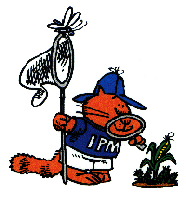
UKREC-Princeton, KY, April 2 - 9, 2004| True armyworm
| 20
| Black cutworm
| 2
| | |
For information on trap counts in southern Illinois visit the Hines Report at - http://www.ipm.uiuc.edu/pubs/hines_report/index.html. The Hines Report is posted weekly by Ron Hines, Senior Research Specialist, at the University of Illinois Dixon Springs Agricultural Center.
NOTE: Trade names are used to simplify the information presented in this newsletter. No endorsement by the Cooperative Extension Service is intended, nor is criticism implied of similar products that are not named.
Lee Townsend
Extension Entomologist